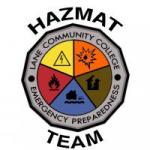Hazmat Team
Incident Response

SAFETY PRECAUTIONS: RESIST RUSHING IN!
APPROACH CAUTIOUSLY FROM UPWIND, UPHILL OR UPSTREAM:
• Stay clear of Vapor, Fumes, Smoke and Spills
• Keep vehicle at a safe distance from the scene
SECURE THE SCENE:
• Isolate the area and protect yourself and others
IDENTIFY THE HAZARDS USING ANY OF THE FOLLOWING:
• Placards
• Container labels
• Shipping documents
• Rail Car and Road Trailer Identification Chart
• Safety Data Sheets (SDS)
• Knowledge of persons on scene
• Consult applicable guide page
ASSESS THE SITUATION:
• Is there a fire, a spill or a leak?
• What are the weather conditions?
• What is the terrain like?
• Who/what is at risk: people, property or the environment?
• What actions should be taken – evacuation, shelter in-place or dike?
• What resources (human and equipment) are required?
• What can be done immediately?
OBTAIN HELP:
• Advise your headquarters to notify responsible agencies and call for assistance from
qualified personnel
RESPOND:
• Enter only when wearing appropriate protective gear
• Rescue attempts and protecting property must be weighed against you becoming
part of the problem
• Establish a command post and lines of communication
• Continually reassess the situation and modify response accordingly
• Consider safety of people in the immediate area first, including your own safety
ABOVE ALL: Do not assume that gases or vapors are harmless because of lack of a smell—
odorless gases or vapors may be harmful. Use CAUTION when handling empty containers
because they may still present hazards until they are cleaned and purged of all residues.
